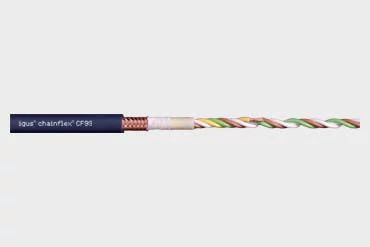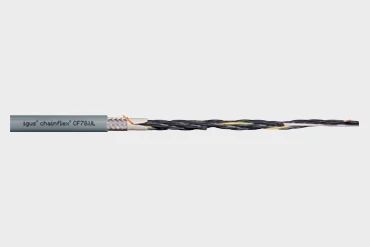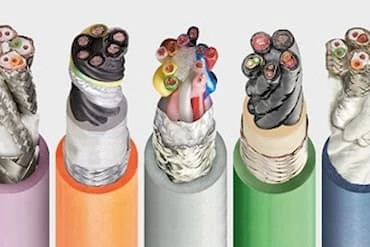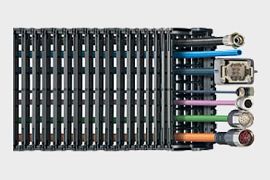A control cable is a cable that transmits switching statuses and control signals between a transmitter and a receiver. Control cables from igus® are used wherever cables are subjected to increased loads due to movement, torsion or harsh environmental conditions.
The chainflex® control cables are available for a variety of mechanical requirements in various approvals and conformity. Depending on the type of control cable, they can be torsion-resistant, suitable for narrow radii, very low temperatures, UV-resistant, flame-retardant or halogen-free. Tested in the igus® laboratory for millions of cycles in e-chains®, they provide guaranteed safety against failure.


.jpg?crop=no&color=ffffff00&w=370&quality=80)
Starting at 12 cores, our control cables have a special mechanical design for long service life in motion. We install so-called cores wound in bundles with short pitch lengths.
But what exactly are cores wound in bundles?
The number of bundles into which the cores are wound depends on the number of cores. These bundles are then stranded in turn. This method is necessary to absorb the pull/push forces which occur during movement. These forces arise when the cable moves around a curve (radius). The cores are compressed in the inner radius and stretched in the outer radius. We developed the cores-wound-in-bundles design to ensure that these forces do not put too much strain on the cores, since a core thus continually changes its position in the cable, balancing out the forces. It is especially important for preventing the so-called corkscrew effect, which often occurs on long travels.


Monday to Friday from 8am - 8pm.
24h